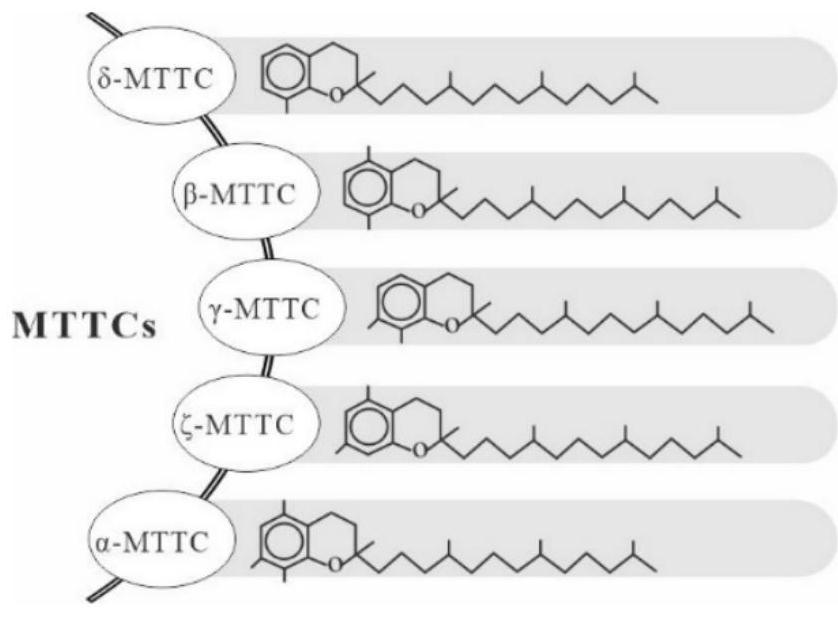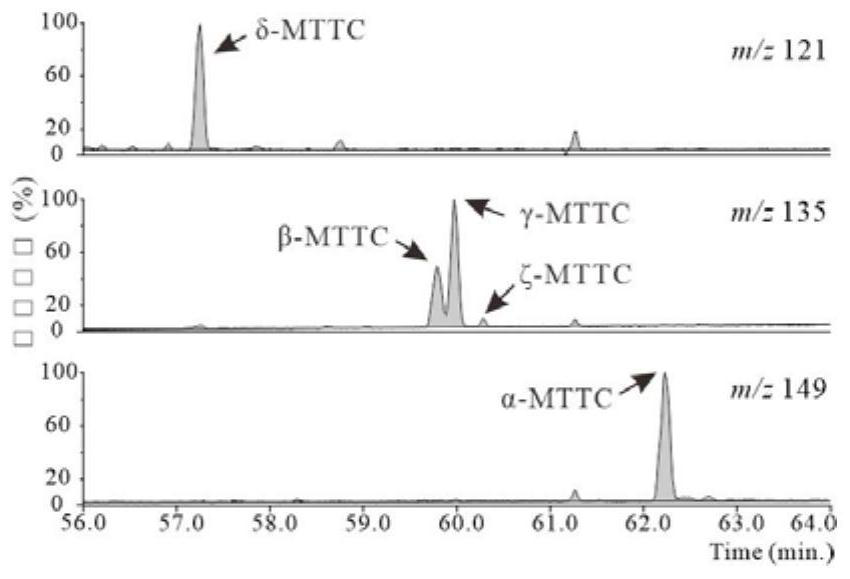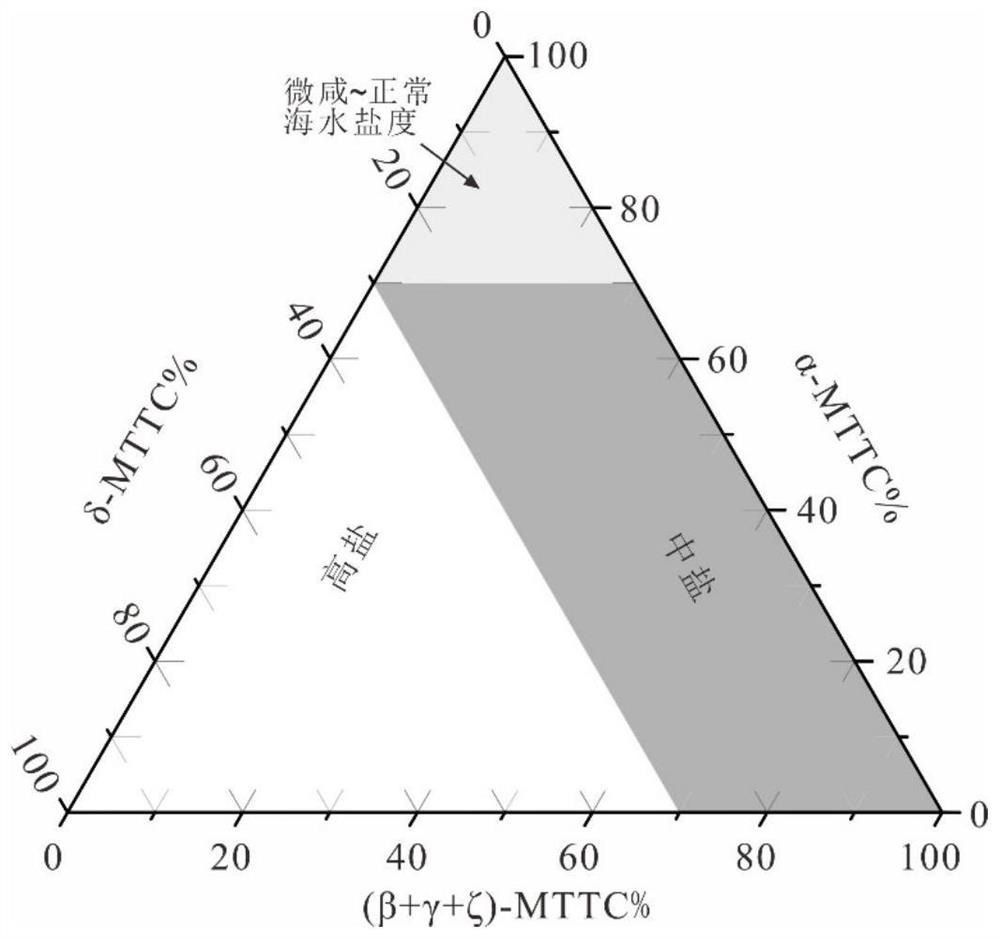Method for identifying paleo-salinity of lacustrine facies deposition
A lacustrine sediment and salinity technology, which is applied in the field of lacustrine sediment paleo-salinity identification, can solve the problems of low credibility of paleo-salinity identification results, achieve good practical application value, enrich identification methods, Good specificity and sensitivity effect
- Summary
- Abstract
- Description
- Claims
- Application Information
AI Technical Summary
Problems solved by technology
Method used
Image
Examples
Embodiment 1
[0037] The present embodiment verifies the accuracy of a method for discriminating the paleo-salinity of lacustrine sediments provided by the present invention, including the following steps:
[0038] (1) Collect mudstone samples known to be formed by deposition of high-salt lacustrine facies, use deionized water and analytically pure methanol to clean the mudstone samples, and then crush the samples until the sample size is ≥200 mesh;
[0039] (2) Weigh 80 g of the pulverized sample in step (1), carry out Soxhlet extraction with a mixed solution of dichloromethane and methanol with a volume ratio of 9:1, and the extraction time is 72h to obtain an extract;
[0040] (3) adding n-hexane to the extract obtained in step (2) and stirring evenly, standing for precipitation, filtering, and taking the filtrate; the filtrate is filled with SiO with a volume ratio of 3:1 2 -Al 2 O 3 The separation column is eluted and separated, wherein the eluent is a mixed solution of n-hexane and ...
Embodiment 2
[0049] The only difference between this example and Example 1 is that the mudstone samples formed by the deposition of the middle salt lake facies are collected.
Embodiment 3
[0051] The only difference between this example and Example 1 is that the mudstone samples formed by lacustrine deposition of brackish water to normal seawater salinity are collected.
[0052] Example of effect
[0053] In this effect example, the relative abundance data of various types of dehydroxylated microbial E-compounds in different mudstone samples obtained in Examples 1-3 are put into a paleo-salinity identification triangle. The results of the points are as follows: Figure 4 shown, from Figure 4 It can be seen that the relative abundance data of various types of dehydroxylated microbial E-compounds in different mudstone samples obtained in Examples 1-3 completely fall into the high-salt areas and medium-salt areas in the paleo-salinity identification triangle. The salinity region and the brackish to normal seawater salinity region, that is, whether it is high salinity or low salinity, the palaeosalinity identification results of the samples in Examples 1-3 are in ...
PUM
| Property | Measurement | Unit |
|---|---|---|
| Particle size | aaaaa | aaaaa |
Abstract
Description
Claims
Application Information
 Login to View More
Login to View More - R&D
- Intellectual Property
- Life Sciences
- Materials
- Tech Scout
- Unparalleled Data Quality
- Higher Quality Content
- 60% Fewer Hallucinations
Browse by: Latest US Patents, China's latest patents, Technical Efficacy Thesaurus, Application Domain, Technology Topic, Popular Technical Reports.
© 2025 PatSnap. All rights reserved.Legal|Privacy policy|Modern Slavery Act Transparency Statement|Sitemap|About US| Contact US: help@patsnap.com



